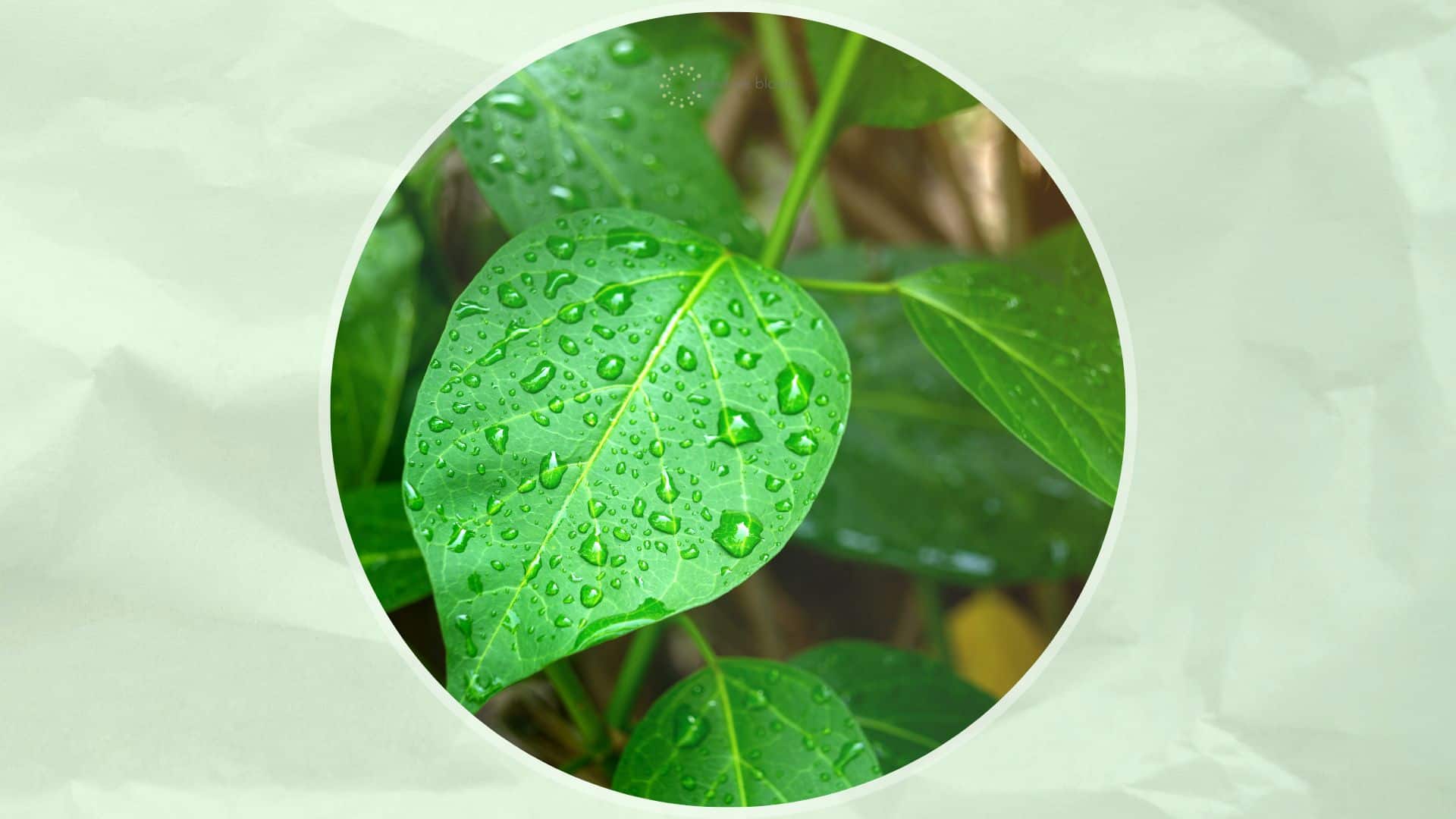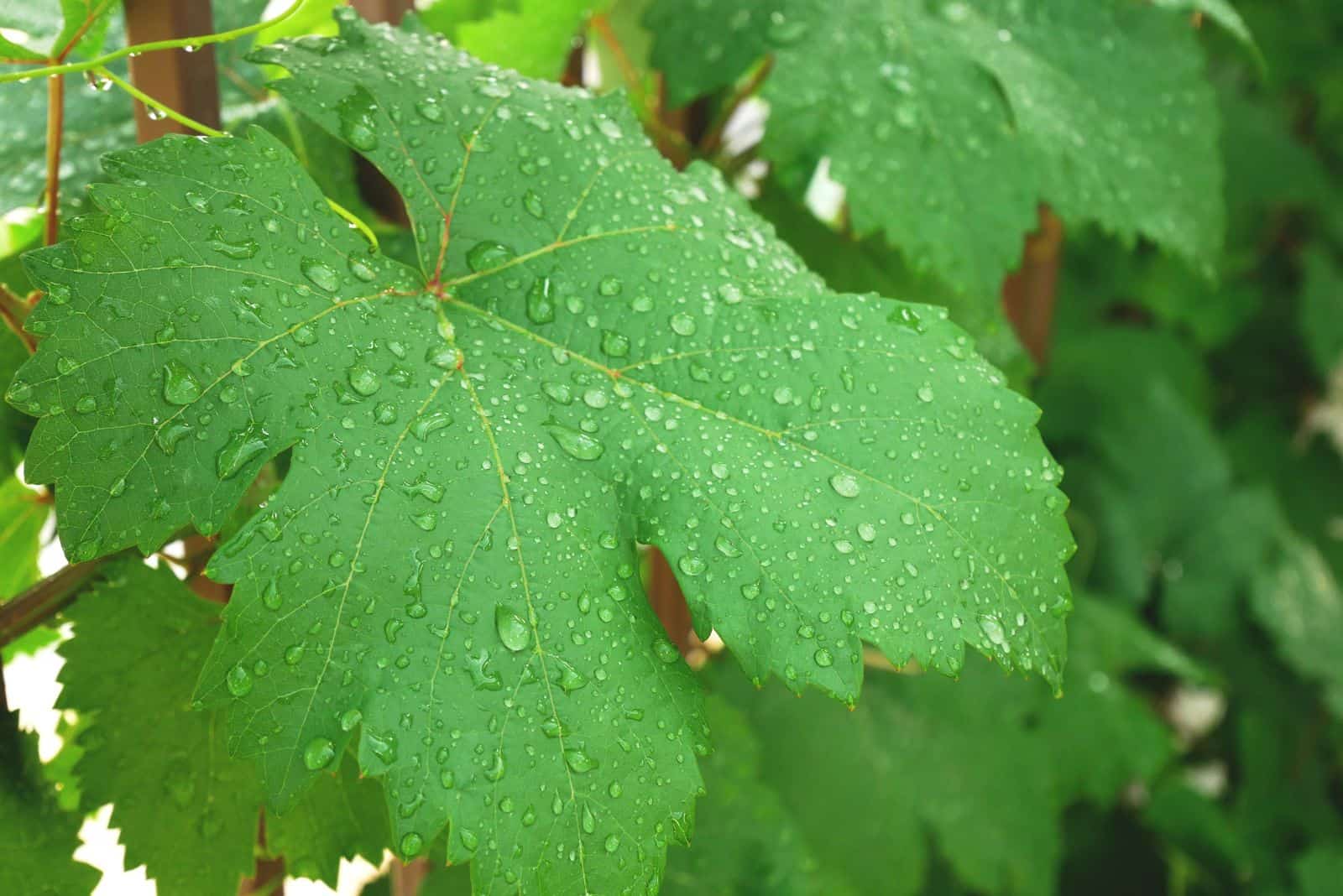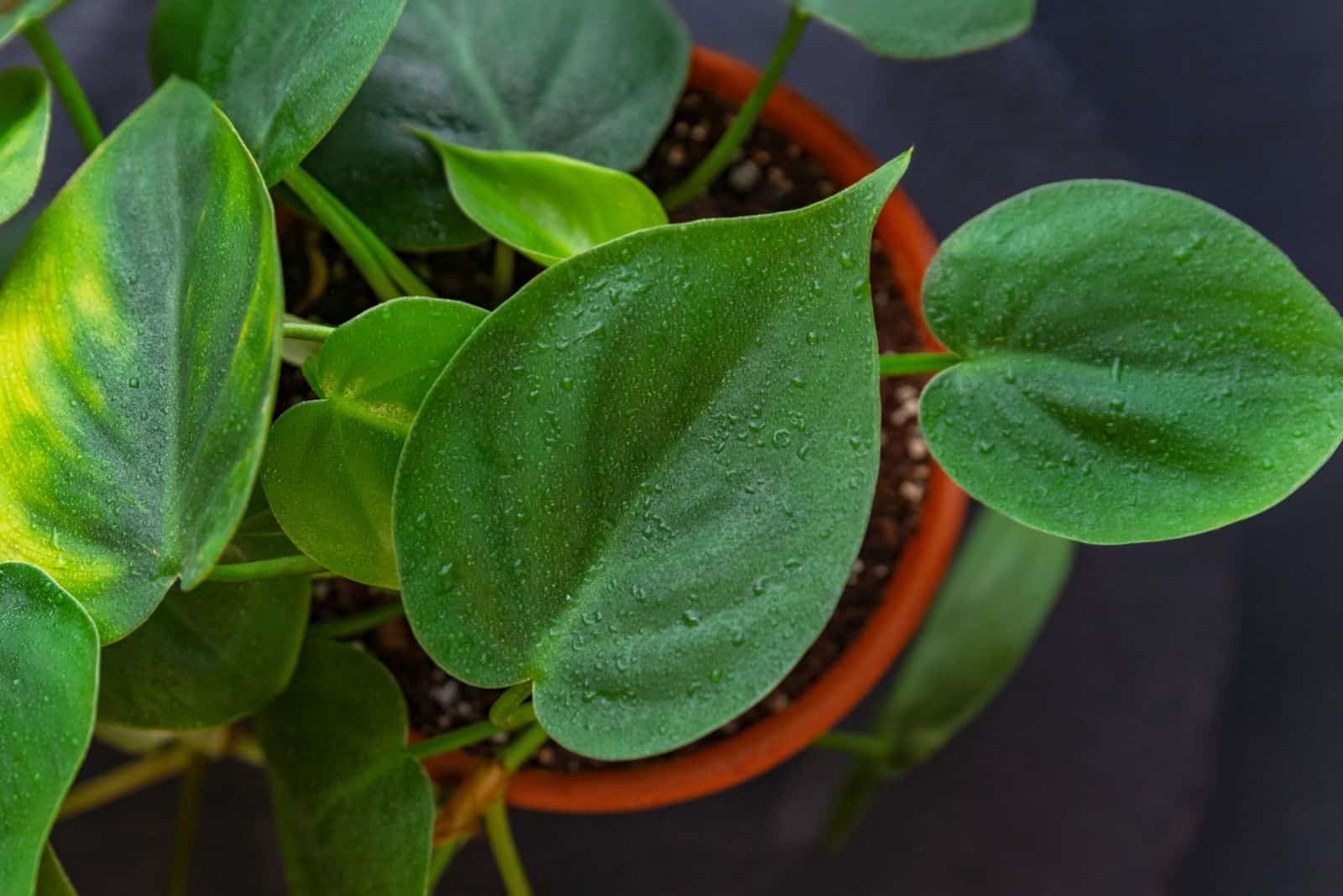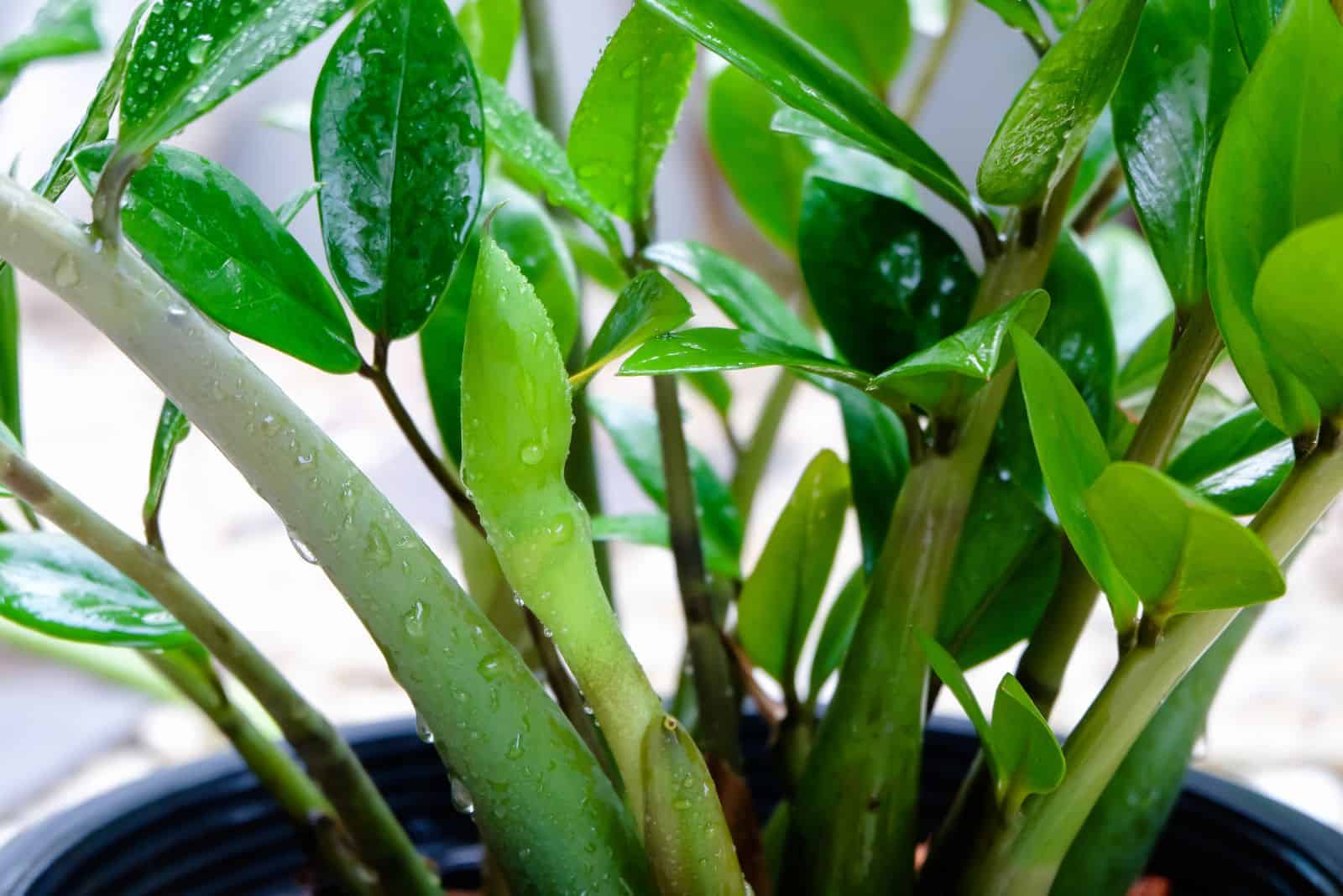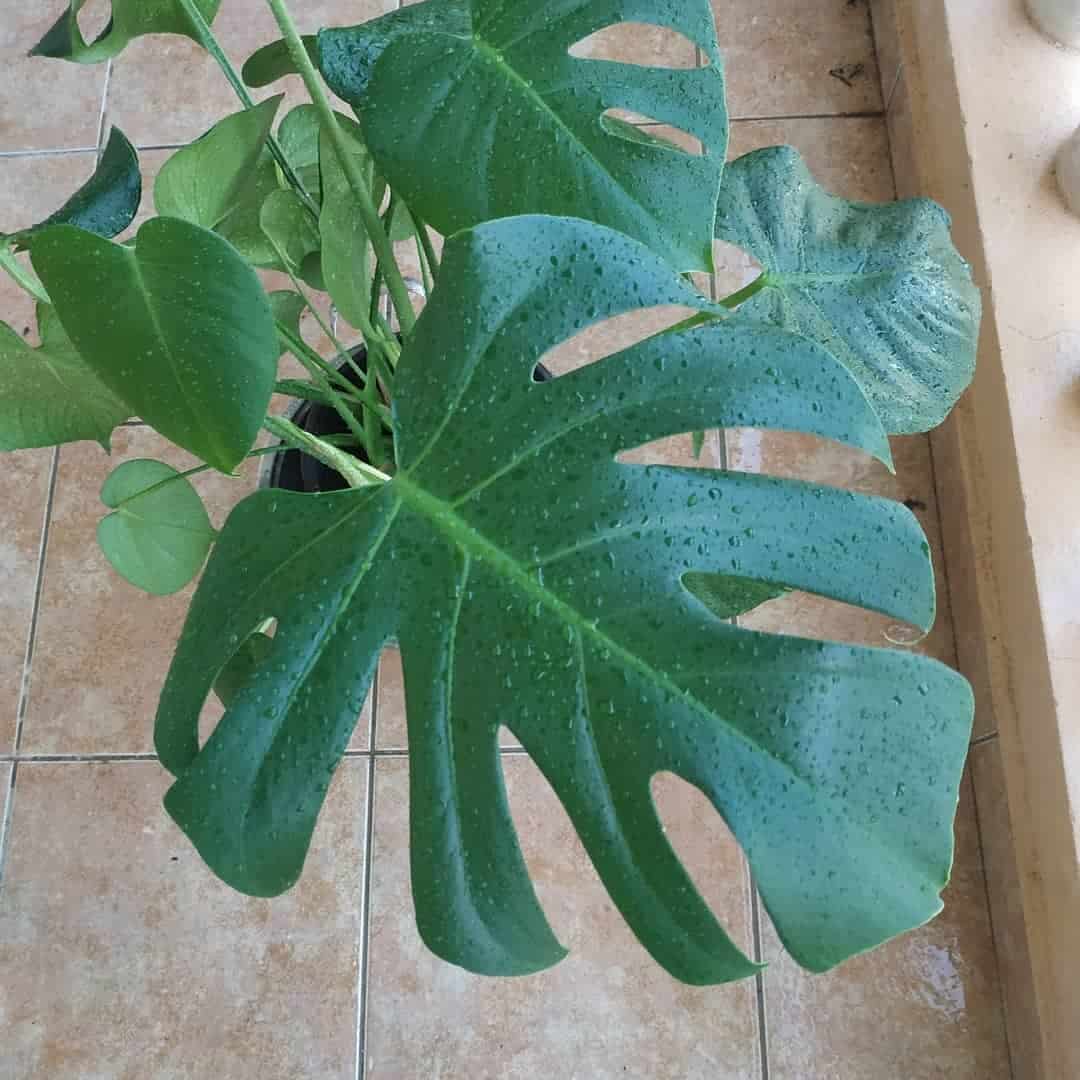We often freak out when we notice our plants behave differently than usual. Although we should be slightly concerned about certain changes, there’s no need to panic.
This is especially true for beginner growers. If you notice leaves with water drops on your green buddy, it’s not crying and it definitely isn’t sad.
In this article, I’ll tell you more about water drops on plant leaves, why it happens, and what to do when it occurs.
I’ll also mention the most common species that experience this phenomenon.
Let’s get started!
Why Do Plants Have Leaves With Water Drops?
Plants can have water drops on their leaves for three reasons: guttation, transpiration, and photosynthesis + respiration.
If you’ve never heard of these terms, don’t worry, I’ll explain everything in detail now.
Guttation
Guttation occurs when water rushes up through plants as a result of high water pressure in the roots.
The water flows from the xylem, which is the primary water transport tissue in plants. Extra water normally exits through tiny openings in the plant’s stem and foliage called stomata.
Stomata, on the other hand, can close at any point, and when they do, the water pressure created by the roots continues to pump water up through the plant.
Water (together with nutrients) is driven out of the foliage as droplets at the tips and margins. The cells found along the margins of the leaves are known as hydathodes, and they are responsible for excreting the water droplets.
These droplets are known as xylem sap since they include nutrients and minerals in addition to water.
This process is essential for beneficial insects such as bees because it allows them to take up water and nutrients more efficiently. There is currently debate on whether pesticide-treated plants emit hazardous droplets that could harm bees.
When Does The Guttation Process Occur?
Since guttation happens only at night (when the stomata and pores close), you will most likely notice little droplets on plant leaves early in the morning or late in the night.
If you’re curious about how this works, it’s because plants can detect the quantity of light they receive. As a result, the pores will open and close during the day, whereas hydathodes will drain the surplus water at night.
This process can also occur as a result of excessive humidity conditions, typically above 80 – 90%, when the plant is incapable of releasing water by transpiration. Fortunately, guttation can assist with this!
Other possible reasons for guttation are overwatering and poor drainage.
Is there a need to worry?
Well, generally speaking, the answer is both yes and no. Luckily, the answer is no in most cases.
The only problem is when your plant displays other changes along with water drops. Why? If water drops occur along with yellowing, browning, mushy soil, and a foul odor, this isn’t normal and your plant is in a life-threatening situation.
Almost no houseplants can withstand overly wet soil, so if any of the signs above appear, you’ll need to repot your plant because it’s most likely suffering from root rot due to excess water in the soil.
Transpiration
Another reason why some plant species have water drops on their foliage may be transpiration. This process is quite similar to guttation.
What happens during this process is that a plant releases water vapor through its stomata.
When temperatures are excessively high, the water vapor loss cools the plant. As a result, water from the stem and root system rushes upwards and is “pulled” into the foliage.
We can refer to this as plant sweating because plants cool down by releasing water vapor, i.e., they protect themselves from high temperatures.
Scientifically speaking, mesophyll cells dehydrate as a response to the loss of water. The cells then excrete plant hormone, commonly referred to as abscisic acid. Because of this process, your plant will lose less water during oxygen release and carbon dioxide absorption.
We’ve seen that guttation takes place during the night, and that’s what makes it different from transpiration, which occurs during the daytime.
Only clean water is discharged during transpiration, posing no risk to beneficial insects.
As previously mentioned, the xylem sap is discharged together with nutrients and minerals in the process of guttation; this is another distinctive feature when it comes to guttation and transpiration.
Respiration And Photosynthesis
Now it’s time to talk about the two most important biological processes when it comes to plants; respiration and photosynthesis, which are carried out by plant leaves and result in the generation of water.
Photosynthesis is responsible for the conversion of water and carbon dioxide to glucose and oxygen.
Glucose is plant food, and oxygen is produced after the plant absorbs the glucose. This is fascinating because oxygen is so irrelevant for plants, but means life for us.
While plants are absorbing carbon dioxide and creating oxygen, they are also engaged in another biochemical activity commonly referred to as respiration.
The best way to explain this is that plants use sugar that is produced in photosynthesis, and convert it to energy.
When the process ends, your plant has the energy for further development. The water drops occur on the leaf margins.
What Should You Do When Dripping Occurs?
You’ve seen that dripping isn’t dangerous, and there’s no need to do anything about it.
Of course, if your plant displays other changes, such as discoloration and deformation, then something is wrong and the dripping is no longer harmless.
The thing is that you won’t notice these drops often, but if it happens all the time you should cut back on watering to see if too much water is causing the droplets.
If your plant starts wilting when you skip one watering, then you should water it like you used to and there’s no need to worry about water drops.
On the other hand, If the water drops don’t appear any more and your plant looks healthy and happy, irrigate your plant according to the new schedule.
I have to mention that irrigation isn’t the only important factor in plant care. Remember that your plant needs less frequent irrigation if it isn’t exposed to much light or the humidity is too low.
Additionally, most indoor plants thrive in free-draining growing substrates, so if the substrate holds more water than it should, you can face watering issues.
Lower temperatures during the winter months decrease the water evaporation rate, which results in lower watering needs for plants.
Once you get all the growing conditions right, you can actually enjoy the image your plant creates when it has water drops on its leaves.
Which Plant Species Commonly Drip?
The list of plants that drip water is actually pretty long. For instance, dripping is frequent in Elephant ear plants. Honestly, I like when my Alocasias and Colocasias have droplets of water on their leaves; it kinda accentuates their beauty.
Other common houseplants that ‘cry’ because of guttation include Monsteras, pothos, Calla lilies, Philodendrons, and ZZ plants.
Fruit and veggies can also have water drops on their foliage, including cucumbers, grapes, tomatoes, and squash.
Common flowering plants and shrubs that go through the process of guttation include roses, hydrangeas, and hibiscus.
Wrapping Up
People who use social media can see pics of plants that have water drops on their leaves.
You must admit that they do look breathtaking. Leaves with water drops aren’t uncommon in plant cultivation.
Luckily, this isn’t dangerous for plants and can occur as a result of three normal processes in nature: transpiration, guttation, and photosynthesis with respiration.
If your plant seems healthy and doesn’t lose its colors or display deformation, there is really nothing to worry about.
Until next time!

